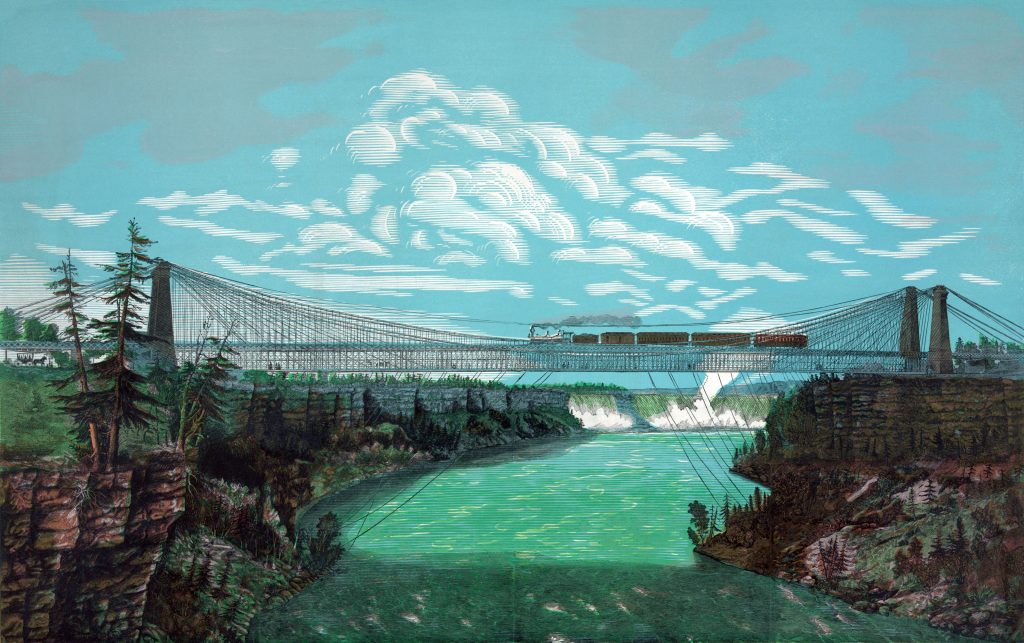
Throughout July we’re taking an in-depth look at Proverbs, the Bible’s one-of-a-kind book about our never-ending need for wisdom.
In 1848 a young engineer from Philadelphia by the name of Charles Ellett Jr. was contemplating a difficult task.
He hoped to build a bridge across the gorge of the Niagara River just below the famous falls.
Local politicians – both Canadians and Americans, representing opposite sides of the river – believed that a bridge linking their two countries would revolutionize the economic prospects of the area.
But dozens of engineers surveyed the setting and agreed it couldn’t be done.
The Niagara Gorge is 800 feet across. The jagged limestone cliffs on both sides are 225 feet high. The water, churned by its 300-plus foot drop over the falls, is so turbulent that it’s barely navigable.
Who in their right mind would attempt to overcome such physical obstacles?
But Ellett was fascinated with suspension bridges. Although they look fragile, suspension bridges are capable of bearing enormous weights – including the simultaneous passage of carriages, pedestrians, and fully loaded trains.
More important, Ellett knew the secret of how suspension bridges are constructed.
To get started, all you need is one cable. Or one wire. Or even one sturdy piece of string. If you can anchor just one strand on each side of the gap, everything else can be added gradually, building upon that single cord.
But how would Ellett get that first strand across the Niagara Gorge? He hosted a dinner to brainstorm ideas.
Using a boat (with mid-19th century technology) was unthinkable. What about attaching a cable to a rocket or a cannonball and shooting it across? Interesting ideas, but not very realistic.
Then someone came up with a truly novel suggestion: Fly a kite over the canyon, trailing a long string. Bring the kite down on the opposite shore and voila – the connection would be made.
On January 31, 1848, an American boy named Homan Walsh successfully landed his kite on the Canadian side of the gorge. Just six months later, on August 1, the bridge was completed and open to the public.
Building a bridge that would allow a train to cross the Niagara River seemed like Mission Impossible.
Actually, the real task turned out to be surprisingly humble and attainable: Figuring out how to get 800 feet of string across the water.
Today you may be facing a responsibility so big and so complicated that you can hardly breathe. You need to complete your education. Or finish remodeling that part of the house. Or wrap up that make-or-break project at work. Or finalize the arrangements for the long-term care of a family member. As you lie awake at night, it feels as if you’re facing an unbridgeable canyon.
So go fly a kite.
Do the one small thing you know you have to do get started.
Get the string over the gorge, and everything else will follow – one small step at a time.
After the first nine chapters of the book of Proverbs – which are really a series of lectures or pep talks about seeking the Way of Wisdom – we arrive at a vast collection of one-sentence pithy sayings. For the next 22 chapters we will wade our way through hundreds of nugget-sized observations, warnings, and pieces of heartfelt advice.
What we notice almost immediately is that Proverbs is biased toward action. The overall thrust of the book is a call to do something – to take the next step, however humble, that will move our lives forward.
“Lazy hands make for poverty, but diligent hands bring wealth. He who gathers crops for summer is a prudent son, but he who sleeps during harvest is a disgraceful son.” (Proverbs 10:4,5)
Step up and step out.
Father Richard Rohr, who directs the Center for Contemplation and Action in Albuquerque, New Mexico, says that the most important word in their name is “and.” It is good to think, ponder, and reflect. But unless such contemplation leads to action, it really isn’t wisdom.
So ask yourself today, “What’s the next simple thing that I know I need to do?”
Take that step. And then another. And then another.
And before you know it, as soon as you’ve put enough of those steps together, the bridge will be built.
